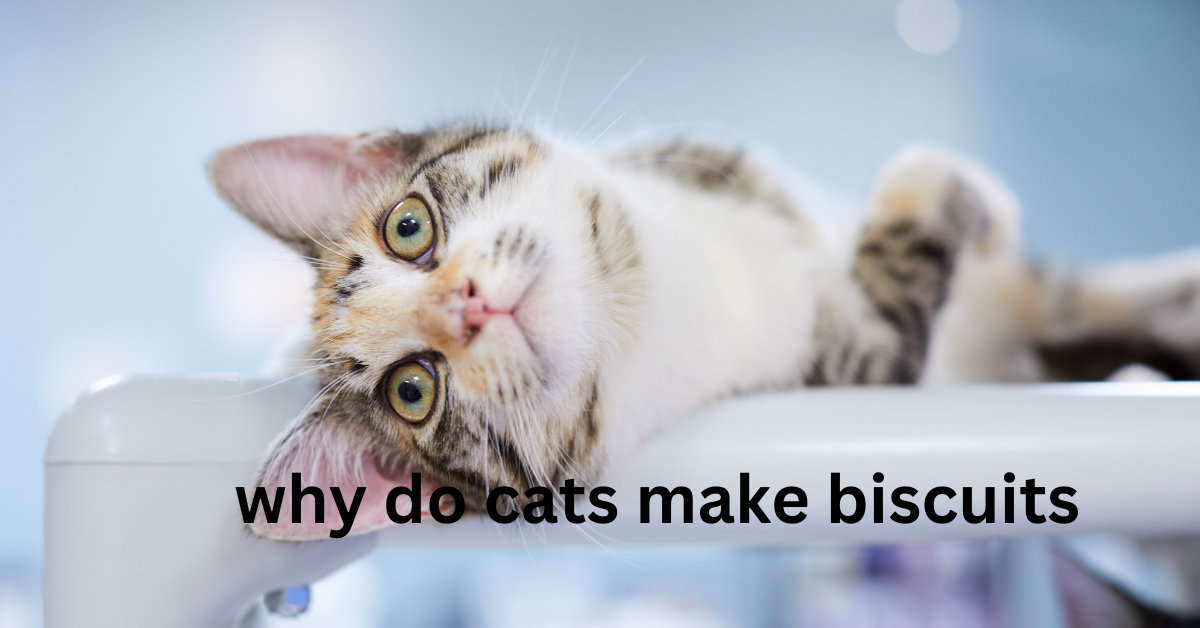why do cats make biscuits
Cats exhibit a variety of unique ways of expression, and one notable behavior is kneading, also affectionately termed “making biscuits.” This activity involves a cat using its paws to rhythmically press down onto different surfaces or objects. This naturally leads to the question: why do cats engage in kneading?
Kneading is an instinctive behavior kittens display to stimulate the flow of milk from their mother. Additionally, cats often knead while being petted, signaling their contentment and pleasure. Moreover, cats may resort to kneading as they settle into their nest, seeking the perfect spot to relax and unwind.
Cats are known for their unique and sometimes puzzling behaviors. One such behavior, often referred to as “making biscuits,” involves rhythmic kneading of paws on soft surfaces, frequently accompanied by a soothing purr. This article delves into the fascinating world of cat kneading, exploring its historical context, scientific explanations, and psychological underpinnings.
Cats are fascinating creatures with a myriad of behaviors that both delight and puzzle their human companions. Among these behaviors, the act of kneading, where a cat rhythmically presses its paws against a soft surface, stands out as particularly endearing. Often referred to as “making biscuits,” this instinctual behavior is deeply rooted in a cat’s physiology and history.
Cat Biscuits and Their History
The term “making biscuits” is a charming nickname for kneading behavior, likely inspired by the resemblance to kneading dough. While the exact origin of this behavior is unknown, historical anecdotes suggest it has been observed for centuries.
The Instinctual Foundation of Kneading
Kneading is an instinctual behavior that begins in kittenhood. Kittens knead their mother’s belly to stimulate milk production during nursing. This not only helps them get nourishment but also strengthens the bond between mother and offspring. As adult cats, they often retain this comforting behavior, associating it with the warmth and safety felt as a kitten.

Comfort and Affection: A Sign of Contentment
When cats knead, it’s typically a sign that your cat feels relaxed and content. The purring that often accompanies kneading is another indicator of a cat’s affectionate state. By kneading a soft object, like a blanket or their human’s lap, cats recreate the soothing experience of their youth. This behavior serves as a way for cats to express their affection and comfort with their surroundings.
Territorial Marking: Leaving Their Scent
Cats have scent glands in their paws, and when they knead, they may also be working to mark their territory. The scent glands release pheromones that signal to other animals that they’ve claimed an area as their own. This behavior harks back to their wild ancestors who would knead to mark their presence in a given area.
The Need for a Safe Nest
Another theory suggests that kneading is a natural behavior that stems from the need to prepare a sleeping area. In the wild, cats would knead tall grass or leaves to create a comfortable nest. This behavior has carried over to domestic cats, who may knead cushions, pillows, or your lap before settling down for a nap.
Health and Well-being: Keeping Claws Sharp
Kneading could also serve a practical purpose for cats. The motion extends and retracts their claws, helping to keep them sharp and clean. This kneading behavior also ensures that their claws are ready for climbing, hunting, or self-defense.
A Veterinary Perspective on Kneading
From a veterinary standpoint, kneading is a natural behavior that should not cause concern unless accompanied by more problematic signs. However, it’s recommended to keep your cat’s nails trimmed to prevent them from becoming too sharp, especially if your cat is an avid kneader.
The Multifaceted Nature of Kneading
In conclusion, kneading is a multifaceted behavior that cats exhibit for various reasons. Whether it’s a leftover instinctual behavior from kittenhood, a means of creating a comfortable resting place, or a way to express affection, kneading is a natural and common behavior in cats. Understanding this behavior can enhance the bond between cats and their cat parents, providing insight into the complex emotional world of our feline friends.

Alex Rivera is a celebrated cat pet specialist and the beloved author of “Whiskers and Paws: Understanding Your Feline Friend,” a comprehensive guide to nurturing happy, healthy cat companions. With over 15 years of experience in cat behavior and welfare, Alex has established themselves as a trusted authority on everything from basic cat care to the intricacies of feline psychology.
Alex’s journey began with a degree in Animal Behavior from the University of Animal Sciences, followed by specialized training in feline behavior. Their career took off when they founded the Cozy Cat Sanctuary, a rescue and adoption center that has since become a haven for cats in need. Through their work, Alex has not only helped countless cats find loving homes but has also educated pet owners on creating fulfilling environments for their feline friends.

